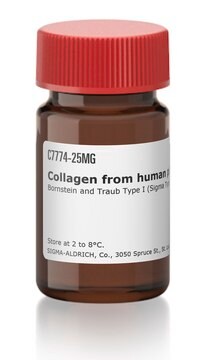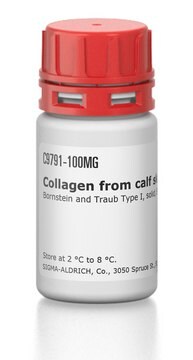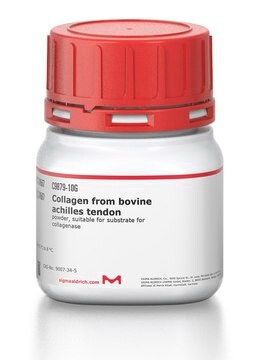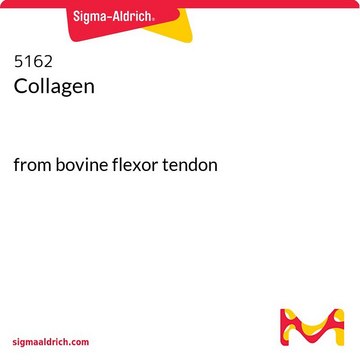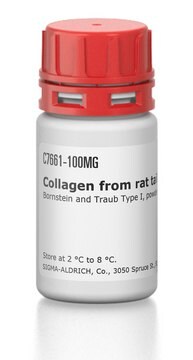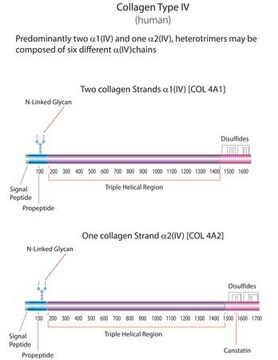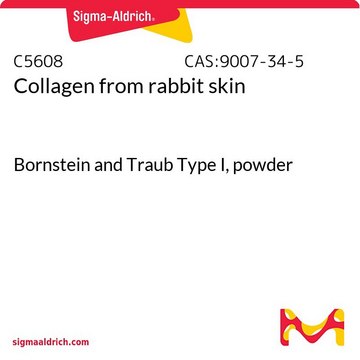C5483
Human Collagen Type I
from human placenta, powder, ~95% (SDS-PAGE), suitable for cell culture
About This Item
Produits recommandés
product name
Collagen human, Bornstein and Traub Type I, acid soluble, powder, ~95% (SDS-PAGE)
Source biologique
human
Niveau de qualité
Pureté
~95% (SDS-PAGE)
Forme
powder
Technique(s)
cell culture | stem cell: suitable
Solubilité
aqueous acid: ≤5 mg/mL
Numéro d'accès UniProt
Température de stockage
2-8°C
Informations sur le gène
human ... COL1A2(1278)
Vous recherchez des produits similaires ? Visite Guide de comparaison des produits
Description générale
Application
Collagen Type I has been used as a scaffold for the growth in vitro of stem cells in a wide variety of biomaterial engineering studies.
- as a component of extracellular matrix in the chemotaxis assay of the rat adipose-derived stem cells
- in adhesion assay of the adult retinal pigmented epithelium-19 (ARPE-19) cell line
- in the glycation aggregation and adsorption studies as a model system for arthritis
Actions biochimiques/physiologiques
Notes préparatoires
Code de la classe de stockage
11 - Combustible Solids
Classe de danger pour l'eau (WGK)
WGK 1
Point d'éclair (°F)
Not applicable
Point d'éclair (°C)
Not applicable
Équipement de protection individuelle
Eyeshields, Gloves, type N95 (US)
Certificats d'analyse (COA)
Recherchez un Certificats d'analyse (COA) en saisissant le numéro de lot du produit. Les numéros de lot figurent sur l'étiquette du produit après les mots "Lot" ou "Batch".
Déjà en possession de ce produit ?
Retrouvez la documentation relative aux produits que vous avez récemment achetés dans la Bibliothèque de documents.
Les clients ont également consulté
Notre équipe de scientifiques dispose d'une expérience dans tous les secteurs de la recherche, notamment en sciences de la vie, science des matériaux, synthèse chimique, chromatographie, analyse et dans de nombreux autres domaines..
Contacter notre Service technique